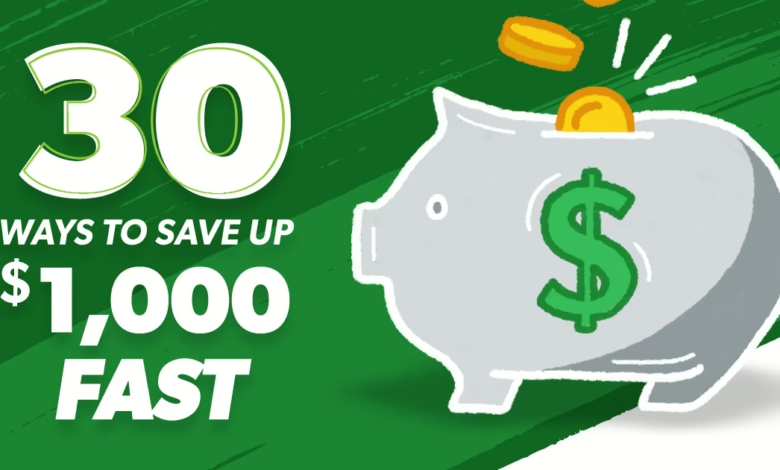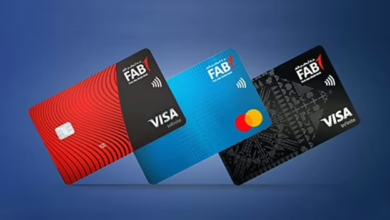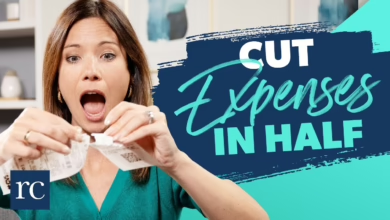
In a world full of uncertainties—unexpected car repairs, medical bills, job loss—having an emergency fund is no longer a luxury; it’s a necessity. If you’ve ever felt financially unprepared during a crisis, it’s time to take control.
The good news? You can build a $1,000 emergency fund in just 30 days with the right mindset, strategy, and small lifestyle changes. This guide breaks it all down into actionable steps—no fluff, just results.
🔹 Why $1,000 Is the Magic Number
You might be wondering: Why $1,000? This amount is considered a strong foundation for a basic emergency fund. It’s enough to cover a minor medical bill, an urgent car repair, or even rent in a financial pinch. Once you hit this milestone, you can build on it gradually.
🔹 Week 1: Set a Clear Goal and Cut Non-Essentials
Target: Save $250 this week
✅ 1. Track Every Dollar
Start by understanding where your money is going. Use budgeting apps like Mint, YNAB, or even a simple spreadsheet.
✅ 2. Cancel or Pause Subscriptions
Streaming services, gym memberships, and premium apps—cut or pause any service you can live without for one month.
✅ 3. Slash Dining Out
Make coffee at home, cook meals, and bring lunch to work. This alone can save $100+ in a week.
🔹 Week 2: Boost Your Income
Target: Save another $250
✅ 1. Freelance or Gig Work
Sign up for platforms like Upwork, Fiverr, TaskRabbit, or DoorDash. Even 5–10 hours a week can earn you $200–$300.
✅ 2. Sell Unused Items
Old electronics, clothes, furniture, or books? List them on Facebook Marketplace, eBay, or Poshmark. Your clutter might be someone else’s treasure.
✅ 3. Offer a Local Service
Babysitting, pet sitting, tutoring, lawn care—market your skills locally. It’s a quick way to bring in extra cash.
🔹 Week 3: Maximize Your Savings
Target: Save $300 this week
✅ 1. No-Spend Challenge
Commit to a 7-day no-spending streak—only essential bills and groceries allowed. Redirect every dollar saved to your emergency fund.
✅ 2. Negotiate Bills
Call your internet or phone provider and ask for a discount or promotional rate. You’d be surprised how often this works.
✅ 3. Use Cashback Apps
Use apps like Rakuten, Ibotta, and Fetch Rewards when shopping to earn instant cashback.
🔹 Week 4: Automate and Stay Consistent
Target: Final $200 push
✅ 1. Automate Your Savings
Set up automatic transfers to a high-yield savings account every payday. Treat savings like a non-negotiable bill.
✅ 2. Stay Motivated
Visualize your progress. Use goal-tracking apps or create a savings thermometer. Celebrate small wins.
✅ 3. Get an Accountability Partner
Share your 30-day challenge with a friend or join a financial support group. You’re more likely to stick with it when someone’s cheering you on.
Where to Keep Your Emergency Fund
Store your emergency fund in a high-yield savings account that’s separate from your checking account. Look for accounts offering 3–5% APY with no monthly fees. This way, your money grows safely and is accessible when you need it most.
Bonus Tips to Keep Growing Your Fund
Direct deposit part of your paycheck into savings
Continue gig work or freelancing on weekends
Treat refunds, bonuses, and cash gifts as savings—not spending money
Gradually grow your fund to cover 3–6 months of expenses
Final Thoughts: You CAN Do This
Building a $1,000 emergency fund in 30 days isn’t just possible—it’s life-changing. It gives you peace of mind, protects you from financial shocks, and builds confidence in your ability to take control of your money.
Start today. One small step at a time adds up to big change.




